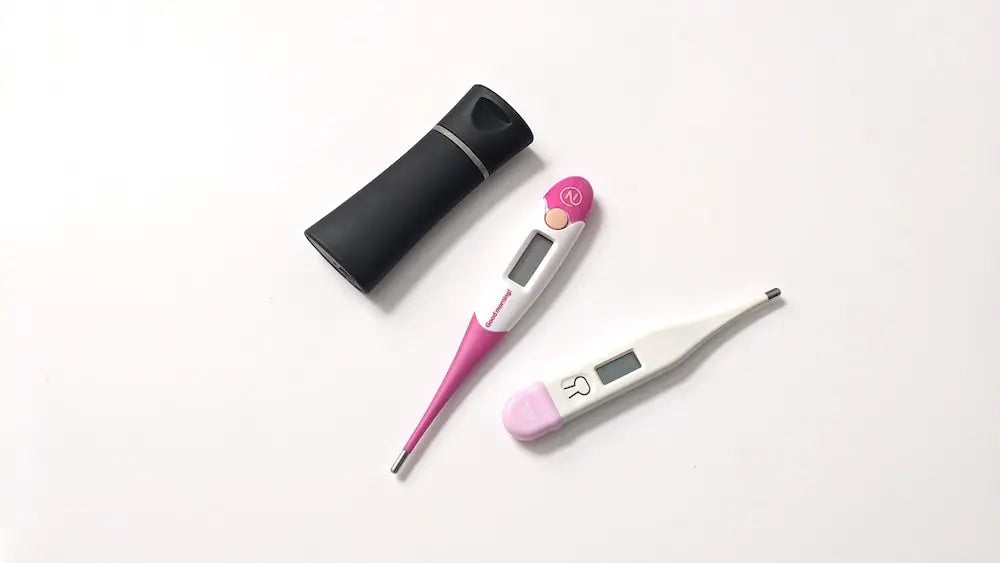In our previous articles we discussed ‘Issues to Watch for Throughout Follicular Phase’ and we also try to solve the mystery around ways to pinpoint ovulation. The second half of your cycle is called the luteal phase, and this is the time between ovulation and your next period.
During this phase, the dominant follicle that ruptured to ovulate a mature egg turns into something called the corpus luteum. This is a cyst-like structure on your ovary that produces primarily progesterone, as well as some estrogen. Progesterone thickens the lining of the uterus in preparation for pregnancy in the event that your egg is fertilized.
When conception has occurred, the blastocyst or embryo produces a hormone called human chorionic gonadotropin (commonly referred to as HCG). This is the hormone detected by pregnancy tests, and if it’s present, it signals to the corpus luteum to continue producing the hormones needed to support the growing baby.
If conception does not occur and HCG is not present, the corpus luteum begins to degrade. As it shrinks, estrogen and progesterone fall, and once these hormones dip below a certain level, the uterine lining is shed in the form of your next period.
It’s important to note here that fertilization happens within 24 hours of ovulation, and it happens in your fallopian tube. But that fertilized egg (called a zygote or blastocyst, depending on the stage) must make its way to the uterus for implantation for the pregnancy to continue successfully. The time from fertilization to implantation is generally somewhere between 6-12 days.1
Because that timeline is quite broad, you need to have a luteal phase of a certain length in order to support a healthy pregnancy. Typically, you want to see at least 11 days but no more than 17 days for this phase. If your luteal phase is very long, it may indicate hormonal imbalances or a condition like PCOS.
A very short luteal phase, called a luteal phase defect, is commonly caused by low progesterone. Another common sign of low progesterone includes a lot of light spotting at the beginning or end of your periods. Low progesterone can be treated with supplements; in particular, the NaProTechnology protocol2 for this issue is highly supportive when you’re TTC.
Other causes of a short luteal phase could include high stress, thyroid problems, nutrition issues, and natural aging, recently coming off hormonal birth control, postpartum cycles, and breastfeeding.
Some women report experiencing light cramping or bleeding around implantation. If you conceive and see spotting or feel some unusual, mild pain before you expect your period to arrive, it may be in response to the blastocyst burrowing into your uterine lining—or it could be related to your corpus luteum, or a number of other things. Just keep an eye on it!
While TTC, the luteal phase can be exceptionally stressful. Known as the dreaded “two week wait,” this is the time of your cycle you might spend waiting around or burning through lots of pregnancy tests while you wait to find out whether conception has occurred. This is natural, but try to be gentle with yourself! Stay busy with things that make you feel happy and relaxed during this phase.
To stay attuned to your health while you wait for that positive test, watch for these potential flags during the luteal phase:
- A very short luteal phase of 10 days or less (this could indicate low progesterone, thyroid issues, or other health problems that may require treatment)
- A very long luteal phase of 18 days or more (sometimes this indicates that ovulation has not actually occurred, or that you’re dealing with PCOS)
- Excessive or off-and-on bleeding or cramping (these could be signs of cysts, fibroids, or other complications)
- Intense PMS symptoms that affect your daily life, such as extreme mood swings, headaches, weight gain, or insomnia (sometimes these may indicate a condition like PMDD, which can benefit from medicinal or hormonal treatments that can bring more peace to your two week wait)
A Final Note: Watch Your Mindset
The information in this article—and the information you get from your kegg and any other tools in your charting methodology—is here to help you feel empowered in understanding what a healthy cycle looks like and confident in spotting potential problems if you’re having a hard time conceiving. But what we don’t want to do is freak you out! So don’t turn to Dr. Google with every small question.
Instead, be kind to yourself by simply leaning on a supportive partner and your doctor when you need a helping hand or have questions. Remember: Stress won’t help your body do what it’s supposed to do. And you’re way ahead of the game by learning about your body in this much detail.
So good on you! And keep at it. You’re doing great!
Sources
1 https://www.whattoexpect.com/getting-pregnant/ovulation/implantation/
2 https://naprotechnology.com/progesterone/



